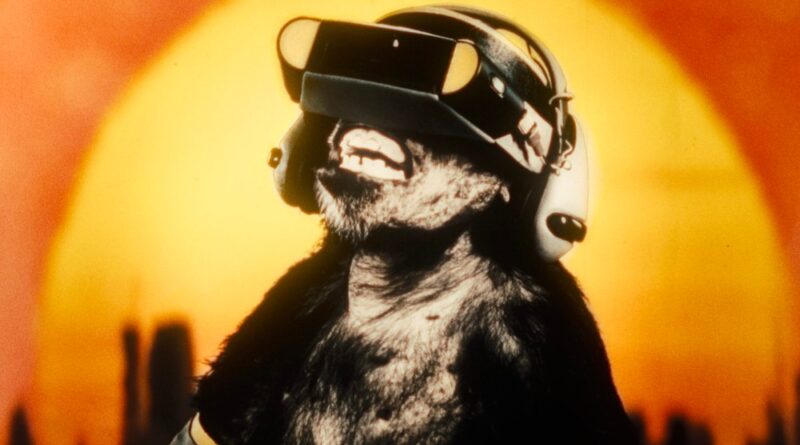Godfrey Reggio’s fun short stories for kids
Avant-garde director Godfrey Reggio once again pulled a surprise, commissioning Philip Glass and a few clowns to devise a musical multimedia pantomime in which children would be seduced by technology.
Godfrey Reggio, author of the Katsi trilogy, has traveled this route before. The obsession with the purity of nature being corrupted by industry, technology and the atomic age is well known, but perhaps the audience is different. This time it’s younger. Now in his 80s, the avant-garde filmmaker, who worked with composer Philip Glass to discover a new cinematic language to warn people about environmental impact, has now turned his attention to children. ing.
In “Once Within a Time,” Reggio parlays concerns about the pitfalls of progress into a story in which adults hope they can use circus-trained acrobatics to right the mess they’ve wreaked on this hand-me-down planet. I am passing this on to the next generation. A dimensional soundtrack and Mike Tyson (best of all) convey his message. At well under an hour (just 43 minutes before the end credits), the project assumes a different attention span than the former monk’s 1982 breakthrough essay film Koyaanisqatsi. Masu. How it’s influenced everything from music videos to Terrence Malick movies.
After a dramatic red velvet curtain farewell, Reggio’s latest project, co-directed by DJ-turned-video-artist John Kane, opens with an anthropomorphic Tree of Life (Susan Dahim) and an otherworldly adventure. The branches sway while lip-syncing the scenery. chant. Reggio film music has always been an essential aspect of its meditative and mind-expanding potential, and this latest collaboration moves from indigenous songs to carnival calliope, from totalitarian crowd cheers to new digital technology beeps and buzzes.
As long ago as 2002, I felt that the last Katsi film, Nakoi Katsi, had not kept up with the visual effects seen everywhere from TV commercials to studio films, making the entire project look dated. I remember. . Reggio wisely embraces his vision of a retro mid-century dystopia here, producing the footage through a process that makes it look like hand-tinted 16mm film, tattered and scratched from decades of use. doing.
Reggio and Kane resist the sharp, hyperdigital look of modern CGI, relying instead on vintage trompe l’oeil effects: double exposures, rear projection, and forced perspective gags with scale models, so everything It has an appealing lo-fi quality to it. (Credited to production designer Scott Pask and costume revolutionaries Machine Dazzle). No doubt much of it was accomplished using new tools, but the results look appealingly old. The title indicates that this is a fable about the present rather than a fairy tale from a distant past, even if the style falls somewhere between a silent film and a medieval Soviet propaganda film.
Early on, “Nonsense Man” (Brian Bellott, dressed as a giant red apple) waddles into a children’s play area and opens his chest panel to reveal a Buster Keaton-esque character (John Flax). It will appear. For a boy in suspenders (Apollo García Orellana) and a high school girl in gingham (Tara Sterling Cozain) who wander in to investigate, the apple is more than just the fruit of forbidden knowledge. It’s also a symbol of the high-tech companies whose pocket-sized, personal computers (misleadingly marketed as “phones”) have captured the surprising attention of today’s youth.
No wonder Reggio depicts these screens as looming black panels, reminiscent of the obelisks in Stanley Kubrick’s 2001: A Space Odyssey. In one of the film’s many unforgettable images of him, a wolf howls at the base of a smartphone and a rocket sticks into the eye of Georges’s Méliès moon on a giant screen. Is this some kind of warning? That’s for the viewer to decide, here represented by a variety of children looking directly into the camera, a strategy Reggio deployed in 2013’s “Visitors.” From mushroom clouds and dancing robots to flying saucers and chimps wearing virtual reality headsets, there’s a lot to handle.
I refuse to accept that Reggio is anti-technology, given that his filmography often relies on innovative tools. But he’s right to be wary of it. “Once Within a Time” explores real-world topics ranging from politics (Bellot is projected onto a giant panopticon and reappears as a looming dictator) to electronics (represented by a Teletubbies-style army). Inviting young people to question the systems they face. emoji). solution? Mike Tyson appears there, playing “The Mentor.” A distracting Mr. T-like figure, he gathers the kids together and gives them the motivational speeches they need to free themselves – but all that comes out of his mouth is screeching percussion. But, and the corner.
Can children relate to Reggio’s message? I’d wager that it does, thanks to the introduction of humor, an element we don’t often associate with Katsi films. From the physicality of the performances (particularly that of García Orellana, who embodies at least four of her characters, and host Flax, who has oversized false teeth) to the comical contrasts provided by the music and sound effects, the short film A fun blend of classic clowning and multimedia. dance show. Reggio is ultimately more optimistic than anxious, and wants his young audience to decide on his “happily ever after.”




